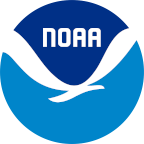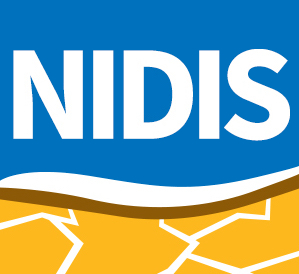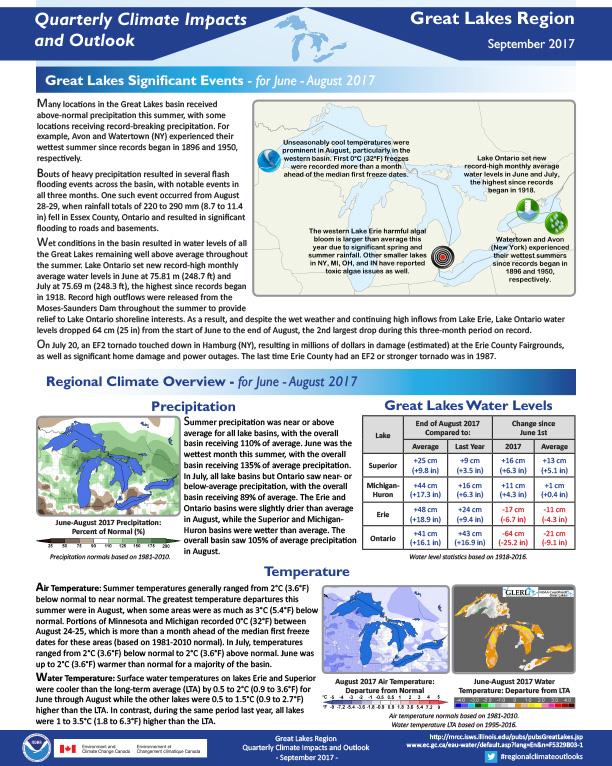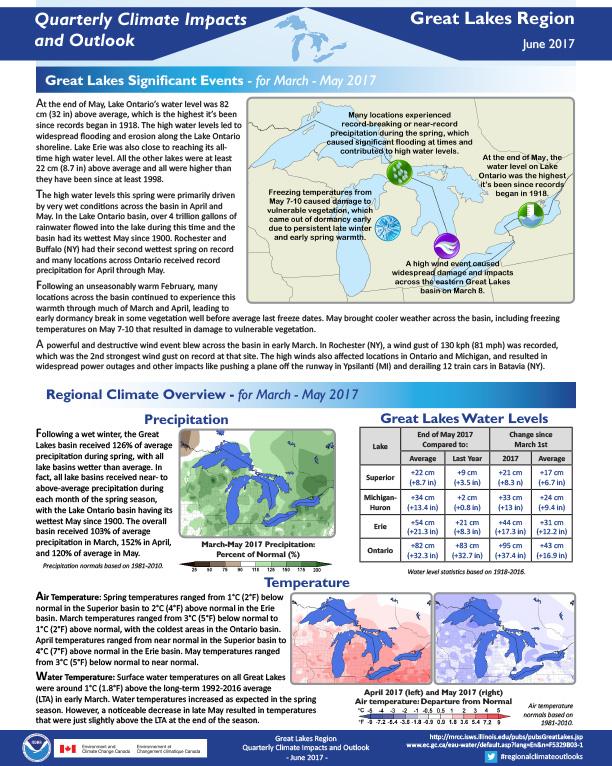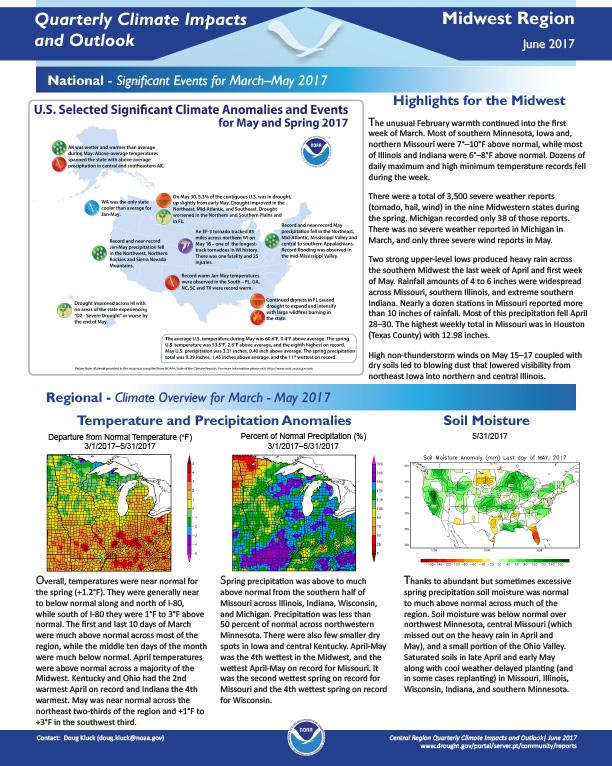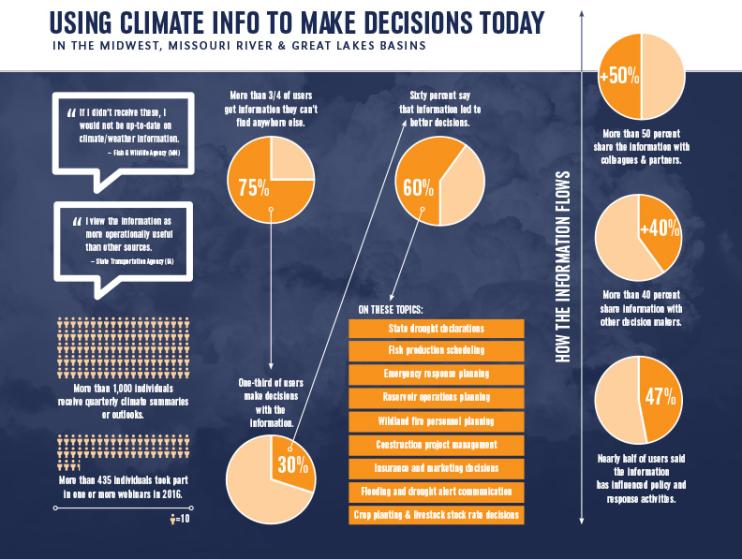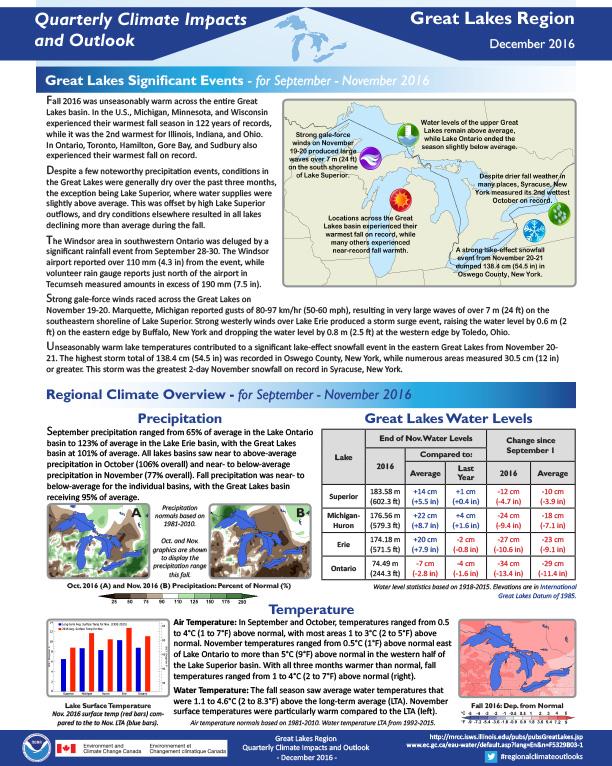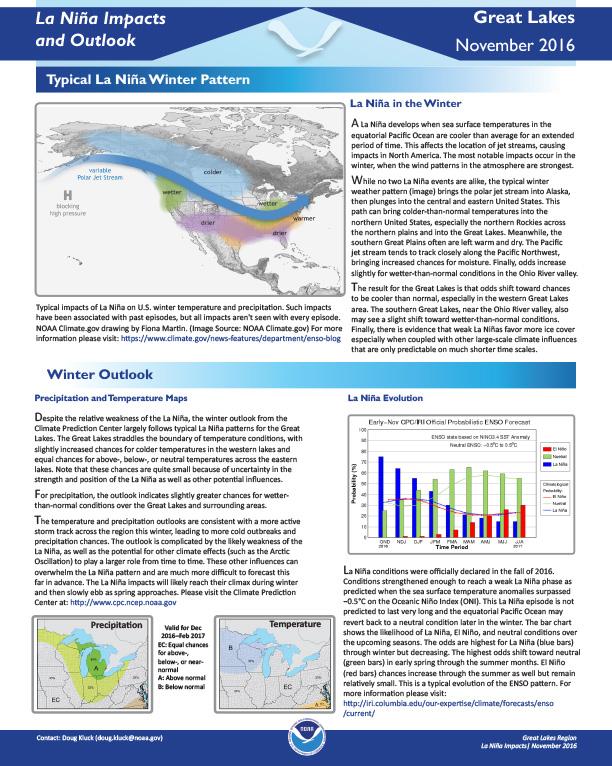Quarterly Climate Impacts and Outlook for the Great Lakes Region for June – August 2017. Dated September 2017.
Quarterly Climate Impacts and Outlook for the Great Lakes Region for March – May 2017. Dated June 2017.
At the end of May, Lake Ontario’s water level was 82 cm (32 in) above average, which is the highest it’s been since records began in 1918. The high water levels led to widespread flooding and erosion along the Lake Ontario shoreline. Lake Erie was also close to reaching its all-time high water level. All the other lakes were at least 22 cm (8.7 in) above average and all were higher than they have been since at least 1998.
Quarterly Climate Impacts and Outlook for the Midwest Region for March – May 2017. Dated June 2017.
The unusual February warmth continued into the first week of March. Most of southern Minnesota, Iowa and, northern Missouri were 7°–10°F above normal, while most of Illinois and Indiana were 6°–8°F above normal. Dozens of daily maximum and high minimum temperature records fell during the week.
Information from regional Drought Early Warning Systems helped people make better decisions in many sectors, including construction, fish production, and agriculture. A recent survey assessed the value of drought and climate-related webinars and quarterly climate summaries produced for decision-makers in the Midwest and Missouri River Drought Early Warning Systems and in the Great Lakes Basin. The National Drought Mitigation Center at the University of Nebraska-Lincoln led the survey, which was funded by the National Integrated Drought Information System.
Quarterly Climate Impacts and Outlook for the Great Lakes Region for December 2016 – February 2017. Dated March 2017.
Quarterly Climate Impacts and Outlook for the Midwest Region for December 2016 – February 2017. Dated March 2017.
Quarterly Climate Impacts and Outlook for the Midwest Region for September – November 2016. Dated December 2016.
Quarterly Climate Impacts and Outlook for the Great Lakes Region for September – November 2016. Dated December 2016.
Defines La Niña; gives outlook for winter temperatures and precipitation; possible effects of La Niña on the Great Lakes region, including agriculture, the economy, water levels and lake ice.
Quarterly Climate Impacts and Outlook for the Midwest Region for June – August 2016. Dated September 2016.
